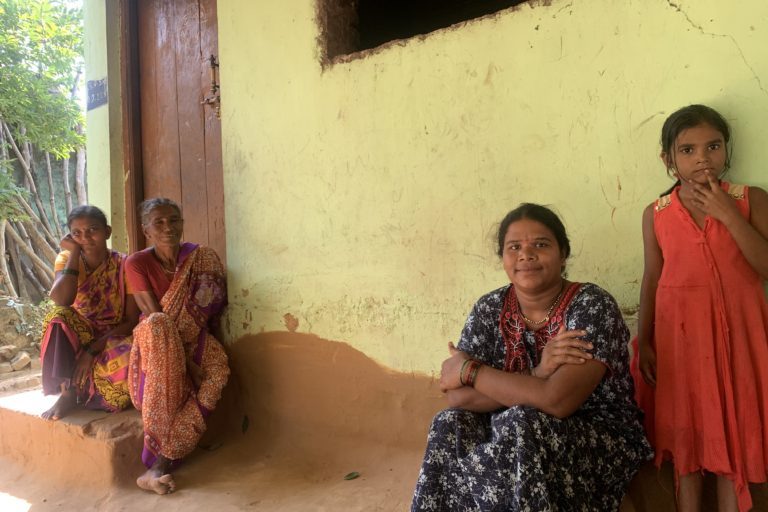 Man-animal conflict
Man-animal conflict
Tigers' return to Gadchiroli forests after 30 years spike human-animal
Maharashtra's Gadchiroli district has seen a sharp increase in tiger population in recent years thanks to spillover from neighbouring Chandrapur district that is home to Tadoba- Andhari Tiger Reserve. Lack of cohabitation experience with the tigers is causing people to panic, which is leading to aggravated human-animal conflicts, writes Saurabh Katkurwar
Until a few years ago, local communities in Maharashtra’s Gadchiroli would have no fear going inside forests to collect firewood, pick fruits, and cultivate their farms. Things, however, have changed drastically now. People in many villages are scared to commute to farms and even step out of their homes after dark. Reason: tigers are on the prowl. They are scared, panicked, and confused as the presence of tigers in Gadchiroli has come as a surprise. It is a new and unusual development for most of them.
Gadchiroli started witnessing human-tiger encounters four years ago. But there has been a sharp increase in encounters this year, with many turning fatal. At least 11 people have lost their lives in tiger attacks. The community members have so far refrained from attacking or killing tigers in retaliation and have asked the forest department to find a solution to the burgeoning problem, which holds the potential to escalate into a major human-animal conflict issue.
The 14,412 sq km Gadchiroli district is rich in natural resources and has dense forest cover. It had over a hundred tigers around 50 years ago. However, the Naxalite movement of the 1970s weakened the conservation efforts, leading to rampant poaching and killing of tigers in the tribal-dominated district. Moreover, poaching of herbivores and illicit tree felling on a large scale made the once-pristine forest areas of Gadchiroli uninhabitable for tigers.
The fast-growing number of tigers in Tadoba-Andhari Tiger Reserve (TATR) as well as in open forests of the neighbouring Chandrapur district has forced the big cats to migrate to Gadchiroli and adapt to the local situation. According to the Maharashtra Forest Department, the official number of tigers in Gadchiroli had reduced to just two in 2000-02. Some even claimed there were no tigers at all. Now the district is witnessing a return of tigers and human-tiger encounters.
.jpg)
Image: Forest staff before search operation to track tigers begin. Photo by Saurabh Katkurwar.
Officials believed there were one or two tigers in 2017 in Gadchiroli, but the number has gone up to around 30-32, said Milind Umre, Gadchiroli’s Honorary Wildlife Warden. “The first case of a tiger attack on local communities was registered in 2017 when a tigress killed two people in Ravi village. The tigress was believed to be a non-resident animal, possibly migrating from Chandrapur temporarily since the tiger’s presence was not known in Gadchiroli till then. In due course, we realised that tigers were seeking permanent habitats in Gadchiroli,” Umre said.
The new tigers of Gadchiroli appeared to have come from the Brahmapuri division — a territorial forest in Chandrapur, which is separated from Gadchiroli by the Wainganga river. The Brahmapuri division is under tremendous pressure due to migrating tigers from the TATR. Thus, tigers now are migrating further to Gadchiroli in search of habitat. Currently, there are 20-24 resident tigers in Gadchiroli, said Kishor Mankar, Conservator of Forest (Territorial). “This is an estimated number. We have photographs of some. There are three breeding tigresses among them. Three years ago, there was no tiger in Gadchiroli,” he said.
Meerabai Muttewar, a 70-year old from Thakri village, said the last time she saw a tiger was around 30 years ago. “We would see tigers when we went inside forests to collect firewood. But we were not scared as the tigers did not attack but avoided humans. We did not see tigers in the last 30 years. But now we hear that tigers have returned,” she said.
Tikaram Gavture, Pandurang Bharne and Arvind Jangate are in their late 40s, but they have never seen or heard of tigers in the Gadchiroli forest in their lifetime. Thus, the sudden presence of tigers has startled them.
Gavture lost his brother and Jangate, his wife, to tiger attacks in the last year. Gavture said his brother Govind was killed by a tiger when he was busy working on his farm in October 2020. “It was the first case in our area. It was hard to believe that there was a tiger and it killed a man,” Gavture said.
Since the presence of carnivores such as tigers, leopards, bears was believed to be almost nil, local communities would venture into forests fearlessly. In August this year, Jangate’s wife Vandana had gone with other women from Mudza village to collect Kuda flowers (Holarrhena pubescens), used in preparing curry.
“These women were just a few metres from each other, busy plucking Kuda flowers. Suddenly, there was a big shout. All got scared and gathered together. They realised that Vandana was missing. They searched the area and found her dead body. The injury marks and wounds confirmed that she was killed by a tiger,” Jangate said.
Now, tigers are seen regularly in broad daylight in the north and central parts of Gadchiroli. And the Wadsa range has become the epicentre of the human-tiger conflict.
Cattle are important prey for tigers in Gadchiroli. This has brought tigers close to farms and human settlements. Since there were no tigers in Gadchiroli for decades, local community members appear clueless about how to deal with the encounters with tigers, said wildlife expert Suresh Chopne.
“The number of tigers has increased in Gadchiroli as poaching activities have reduced and monitoring by the forest department has improved. Since the prey base is low due to high human interference in the past, tigers are focusing on cattle for food. This is the reason for the high possibilities of human-tiger encounters and thus attacks,” said Chopne, who is a member of the Regional Empowered Committee of the Ministry of Environment, Forest and Climate Change.
The free movement of tigers near villages and the fear of being attacked have caused many village residents to bring some changes in their lifestyle. Pournima Chaudhari, whose mother-in-law was killed by a tiger in December last year, said she has stopped going to the farm alone and even refrained from stepping outside her house after dark.
There is one more problem that the local communities are facing. Farm landowners now have to hire more than required labourers for agriculture-related work. “I will have to arrange at least ten villagers to harvest my farm as nobody is ready to work alone or in a small group. I cannot pay all ten. This is not viable. Tiger attacks have affected our livelihoods,” Pandurang Bharne said.
Now, they are asking the forest department to find a workable solution to stop tiger attacks. The forest department has formed a dedicated team to capture tigers suspected to be behind the attacks on humans. “The forest areas are surrounded by or dotted with farmlands. Moreover, there is a significant cover of shrubs. This increases the chances of a conflict. We have a special team of forest staff, which is tasked with coordination with villagers, identification and capturing of problem animals,” said Rakesh Madavi, Range Forest Officer (Wadsa).
In Wadsa, the forest department has narrowed down on a tiger labelled ‘T17′, suspected of killing four people. “We are ready with the required equipment to capture that tiger. We rush to the spot whenever village residents inform us about a tiger’s sighting. However, tracking tigers here is not easy since the terrain is difficult. There is grass and hardened soil. So we cannot find pugmarks, and trail tigers,” said a forest guard, who wished not to be named.
In some places, residents of the villages, local politicians have demanded problem animals be captured and sent to zoos or be translocated. However, forest departments see coexistence as a workable solution. “Since there were no tigers for over 30 years, people in Gadchiroli are unaware about how to deal with them. These tigers are well inside the forest. So we cannot capture them just like that. Various solutions are being suggested. But we find coexistence is the only viable option,” Mankar said.
 Meerabai Muttewar (middle) and Pournima Chaudhari. Photo by Saurabh Katkurwar.
Meerabai Muttewar (middle) and Pournima Chaudhari. Photo by Saurabh Katkurwar.
Wildlife experts, too feel coexistence is the sustainable solution and conflict can be reduced significantly if small things are taken care of. “It has been noticed that most of the attacks have occurred on shepherds. Tiger intends to kill cattle, but the shepherd tries to save cattle and gets attacked in the process. The forest department anyway compensates the owners of killed cattle. So human casualties can reduce if shepherds do not come in the way of the tiger’s hunting. Several such small measures can make a big difference,” said wildlife activist Mukesh Bhandakkar.
Experts asserted that wildlife corridors must be kept intact and protected from human interference. “Tigers’ movement is blocked if corridor for their migration is disturbed or destroyed. Disturbances to tiger migration increase the chances of human-tiger encounters. So we must prioritise ensuring a smooth wildlife corridor,” Chopne said.
In the wake of a fast-growing tiger population in the TATR, central parts of Gadchiroli are set to witness the tiger population going up in the near future. This will compel tigers to migrate to the southern parts of the district, which has dense forest cover but a low prey base. Public awareness and an effective wildlife management plan are necessary tools to mitigate human-tiger conflicts that can affect tiger conservation, maintained wildlife experts.
Support Our Journalism
We cannot do without you.. your contribution supports unbiased journalism
IBNS is not driven by any ism- not wokeism, not racism, not skewed secularism, not hyper right-wing or left liberal ideals, nor by any hardline religious beliefs or hyper nationalism. We want to serve you good old objective news, as they are. We do not judge or preach. We let people decide for themselves. We only try to present factual and well-sourced news.







